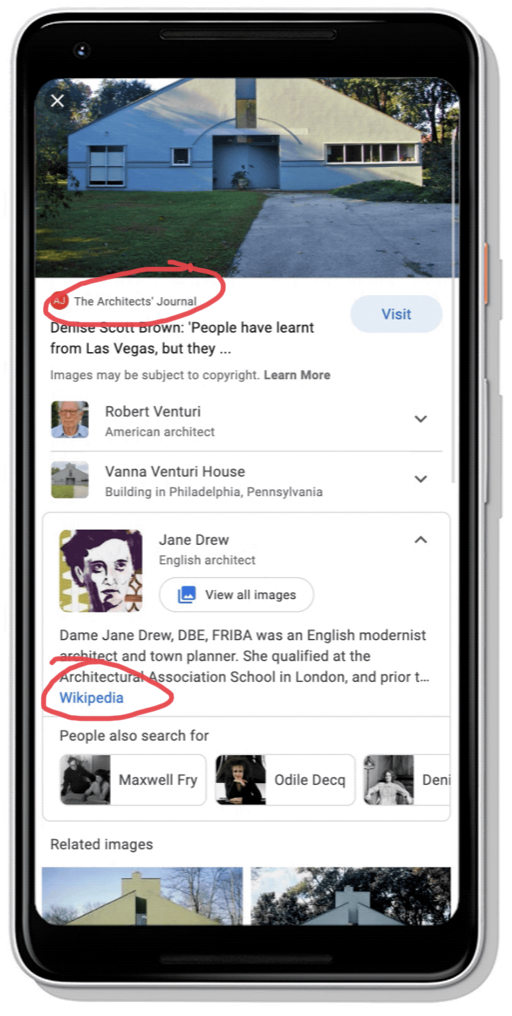Google is adding more context to photos in image search results, which presents site owners with a new opportunity to earn traffic.
Launching this week, a new feature in Google Images surfaces quick facts about what’s being shown in photos.
Information about people, places or things related to the image is pulled from Google’s Knowledge Graph and displayed underneath photos when they’re clicked on.

More Context = More Clicks?
Google says this update is intended to help searchers explore topics in more detail.
One of the ways searchers can explore topics in more detail is by visiting the web page where the image is featured.
The added context is likely to make images more appealing to click on. It’s almost like Google added meta descriptions to image search results.
However, it’s not quite the same as that, because the images and the facts appearing underneath come from different sources.

Results in Google Images are sourced from sites all over the web, but the corresponding facts for each image are pulled from the Knowledge Graph.
In the examples shared by Google, you can see how the image comes from the website where it’s hosted while the additional info is taken from another source.
On one hand, that gives site owners little control over the information that is displayed under their images in search results.
On the other hand, Google is giving searchers more information about images that could potentially drive more clicks to the image source.
Perhaps the best part of this update is it requires no action on the part of site owners. Google will enhance your image search snippets all on its own.
Another Traffic Opportunity
If you’re fortunate enough to have content included in Google’s Knowledge Graph, then there’s now more opportunities to have those links surfaced in search results.
Contrary to how it may seem at times, Wikipedia is not the only source of information in Google’s Knowledge Graph. Google draws from hundreds of sites across the web to compile billions of facts.
After all, there are over 500 billion facts about five billion entities in the Knowledge Graph – they can’t all come from Wikipedia.
An official Google help page states:
“Facts in the Knowledge Graph come from a variety of sources that compile factual information. In addition to public sources, we license data to provide information such as sports scores, stock prices, and weather forecasts.
We also receive factual information directly from content owners in various ways, including from those who suggest changes to knowledge panels they’ve claimed.”
As Google says, site owners can submit information to the Knowledge Graph by claiming a knowledge panel.
That’s not something everyone can do, however, as they either have to be an entity featured in a knowledge panel or represent one.
But this is still worth mentioning as it’s low-hanging fruit for those who have the opportunity to claim a knowledge panel and haven’t yet.
Claiming your business’s knowledge panel is a must-do if you haven’t done so already. Local businesses stand to gain the most from from this update.
That’s especially true if yours is the sort of business that would have photos of it published on the web.
Then your Knowledge Graph information, with a link, could potentially be surfaced underneath those images.
For more on how to influence what’s included in Google’s Knowledge Graph, see this guide:
This feature is rolling out to mobile search results in the US.
Source: Google





